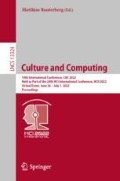Abstract
Protest music is a phenomenal and widely circulated form of protest art in social movements. Previous protest music research has extensively focused on lyrics while ignoring other musical features that also contribute to the role of protest music in social movements. This study fills a gap in previous research by converting 397 unstructured musical pieces into structured music features and proposing a k-means clustering analysis to categorize protest songs based on both high-level conceptual features collected from Spotify and low-level descriptive audio features extracted via Librosa. The Davies–Bouldin index, inertia curve, Silhouette curve, and Silhouette diagram were the main measurements used to compare model performance. An innovative threshold filtering approach (optimizer area) was used to label 128 protest songs. Through a bottom-up folksonomy approach to music classification, this study overcomes the limitations of traditional genre classification by introducing other high-level features (e.g., energy, danceability, instrumentalness) and their roles in determining protest music categories.
Access this chapter
Tax calculation will be finalised at checkout
Purchases are for personal use only
References
Green Jr., D.F.: Views from the bricks: notes on reading and protest. CLA J. 63, 169–173 (2020). https://doi.org/10.34042/claj.63.2.0169
Philpott, S.: Of country and country: twang and trauma in Australian Indigenous popular music. Politik 23, 94–98 (2020). https://doi.org/10.7146/politik.v23i1.120312
Scaringella, N., Zoia, G., Mlynek, D.: Automatic genre classification of music content. IEEE Signal Process. Mag. 23, 133–141 (2006). https://doi.org/10.1109/MSP.2006.1598089
Mondak, J.J.: Protest music as political persuasion (1988). https://doi.org/10.1080/03007768808591322
Denisoff, R.S.: Songs of persuasion: a sociological analysis of urban propaganda songs. J. Am. Folk. 79, 581–589 (1966). https://doi.org/10.2307/538223
Quirk Cort, M.E.: The Power of Lyrical Protest: Examining the Rhetorical Function of Protest Songs in the 2000s (2013)
Eyerman, R., Jamison, A.: Taking traditions seriously. In: Music and Social Movements: Mobilizing Traditions in the Twentieth Century, pp. 26–47. Cambridge University Press (1998). https://doi.org/10.2307/767983
Eyerman, R.: Music in movement: cultural politics and old and new social movements. Qual. Sociol. 25, 443–458 (2002). https://doi.org/10.1023/A:1016042215533
Bainbridge, C.M., et al.: Infants relax in response to unfamiliar foreign lullabies. Nat. Hum. Behav. 5, 256–264 (2021). https://doi.org/10.1038/s41562-020-00963-z
Dillman Carpentier, F.R., Potter, R.F.: Effects of music on physiological arousal: explorations into tempo and genre (2007). https://doi.org/10.1080/15213260701533045
Rosenthal, R.: Serving the movement: the role(s) of music. Pop. Music Soc. 25, 11–24 (2001)
Ghosal, S.S., Sarkar, I.: Novel approach to music genre classification using clustering augmented learning method (CALM). In: CEUR Workshop Proceedings, vol. 2600 (2020)
Tsai, W.H., Bao, D.F.: Clustering music recordings based on genres. J. Inf. Sci. Eng. 26, 2059–2074 (2010)
Tzanetakis, G., Cook, P.: Musical genre classification of audio signals. In: IEEE Transactions on Speech and Audio Processing, pp. 293–302. IEEE (2002)
Cheng, Y.H., Chang, P.C., Kuo, C.N.: Convolutional neural networks approach for music genre classification. In: Proceedings of 2020 International Symposium on Computer, Consumer and Control, IS3C 2020, pp. 399–403 (2020). https://doi.org/10.1109/IS3C50286.2020.00109
Choi, K., Fazekas, G., Sandler, M., Cho, K.: Convolutional recurrent neural networks for music classification. In: ICASSP, IEEE International Conference on Acoustics, Speech and Signal Processing Proceedings, pp. 2392–2396 (2017). https://doi.org/10.1109/ICASSP.2017.7952585
Kim, D.M., Kim, K.S., Park, K.H., Lee, J.H., Lee, K.M.: A music recommendation system with a dynamic K-means clustering algorithm. In: Proceedings of the 6th International Conference on Machine Learning and Applications, ICMLA 2007, pp. 399–403 (2007). https://doi.org/10.1109/ICMLA.2007.97
Atmaja, B.T., Akagi, M.: On the differences between song and speech emotion recognition: effect of feature sets, feature types, and classifiers. In: IEEE Region 10 Annual International Conference Proceedings/TENCON, November 2020, pp. 968–972 (2020). https://doi.org/10.1109/TENCON50793.2020.9293852
Lidy, T., Rauber, A.: Evaluation of feature extractors and psycho-acoustic transformations for music genre classification. In: ISMIR 2005, 6th International Conference on Music Information Retrieval, pp. 34–41 (2005)
Rodà, A., Canazza, S., De Poli, G.: Clustering affective qualities of classical music: beyond the valence-arousal plane. IEEE Trans. Affect. Comput. 5, 364–376 (2014). https://doi.org/10.1109/TAFFC.2014.2343222
Blaszke, M., Koszewski, D.: Determination of low-level audio descriptors of a musical instrument sound using neural network. In: Signal Processing: Algorithms, Architectures, Arrangements, and Applications Proceedings, SPA, September 2020, pp. 138–141 (2020). https://doi.org/10.23919/spa50552.2020.9241264
Li, T., Ogihara, M., Li, Q.: A comparative study on content-based music genre classification. In: Proceedings of the 26th Annual International ACM SIGIR Conference on Research and Development in Informaion Retrieval, pp. 282–289, Toronto, Canada (2003). https://doi.org/10.1109/ISSPA.2003.1224828
Xu, C., Maddage, N.C., Shao, X., Cao, F., Tian, Q.: Musical genre classification using support vector machines. In: 2003 IEEE International Conference on Acoustics, Speech, and Signal Processing, pp. 429–432 (2003)
Fu, Z., Lu, G., Ting, K.M., Zhang, D.: Learning Naive Bayes classifiers for music classification and retrieval. In: Proceedings of the International Conference on Pattern Recognition, pp. 4589–4592 (2010). https://doi.org/10.1109/ICPR.2010.1121
Vishnupriya, S., Meenakshi, K.: Automatic music genre classification using convolution neural network. In: 2018 International Conference on Computer Communication and Informatics, ICCCI 2018, pp. 4–7 (2018). https://doi.org/10.1109/ICCCI.2018.8441340
Gwardys, G., Grzywczak, D.: Deep image features in music information retrieval. Int. J. Electron. Telecommun. 60, 321–326 (2014). https://doi.org/10.2478/eletel-2014-0042
Jondya, A.G., Iswanto, B.H.: Indonesian’s traditional music clustering based on audio features. Procedia Comput. Sci. 116, 174–181 (2017). https://doi.org/10.1016/j.procs.2017.10.019
Skidén, P.: New Endpoints: Audio Features, Recommendations and User Taste. https://developer.spotify.com/community/news/2016/03/29/audio-features-recommendations-user-taste/
McFee, B., et al.: librosa: audio and music signal analysis in Python. In: Proceedings of the 14th Python in Science Conference, pp. 18–24 (2015). https://doi.org/10.25080/majora-7b98e3ed-003
Stürmer, S., Simon, B.: The role of collective identification in social movement participation: a panel study in the context of the German gay movement. Personal. Soc. Psychol. Bull. 30, 263–277 (2004). https://doi.org/10.1177/0146167203256690
Author information
Authors and Affiliations
Corresponding author
Editor information
Editors and Affiliations
Rights and permissions
Copyright information
© 2022 The Author(s), under exclusive license to Springer Nature Switzerland AG
About this paper
Cite this paper
Jiang, Y., Jin, X. (2022). Using k-Means Clustering to Classify Protest Songs Based on Conceptual and Descriptive Audio Features. In: Rauterberg, M. (eds) Culture and Computing. HCII 2022. Lecture Notes in Computer Science, vol 13324. Springer, Cham. https://doi.org/10.1007/978-3-031-05434-1_19
Download citation
DOI: https://doi.org/10.1007/978-3-031-05434-1_19
Published:
Publisher Name: Springer, Cham
Print ISBN: 978-3-031-05433-4
Online ISBN: 978-3-031-05434-1
eBook Packages: Computer ScienceComputer Science (R0)

